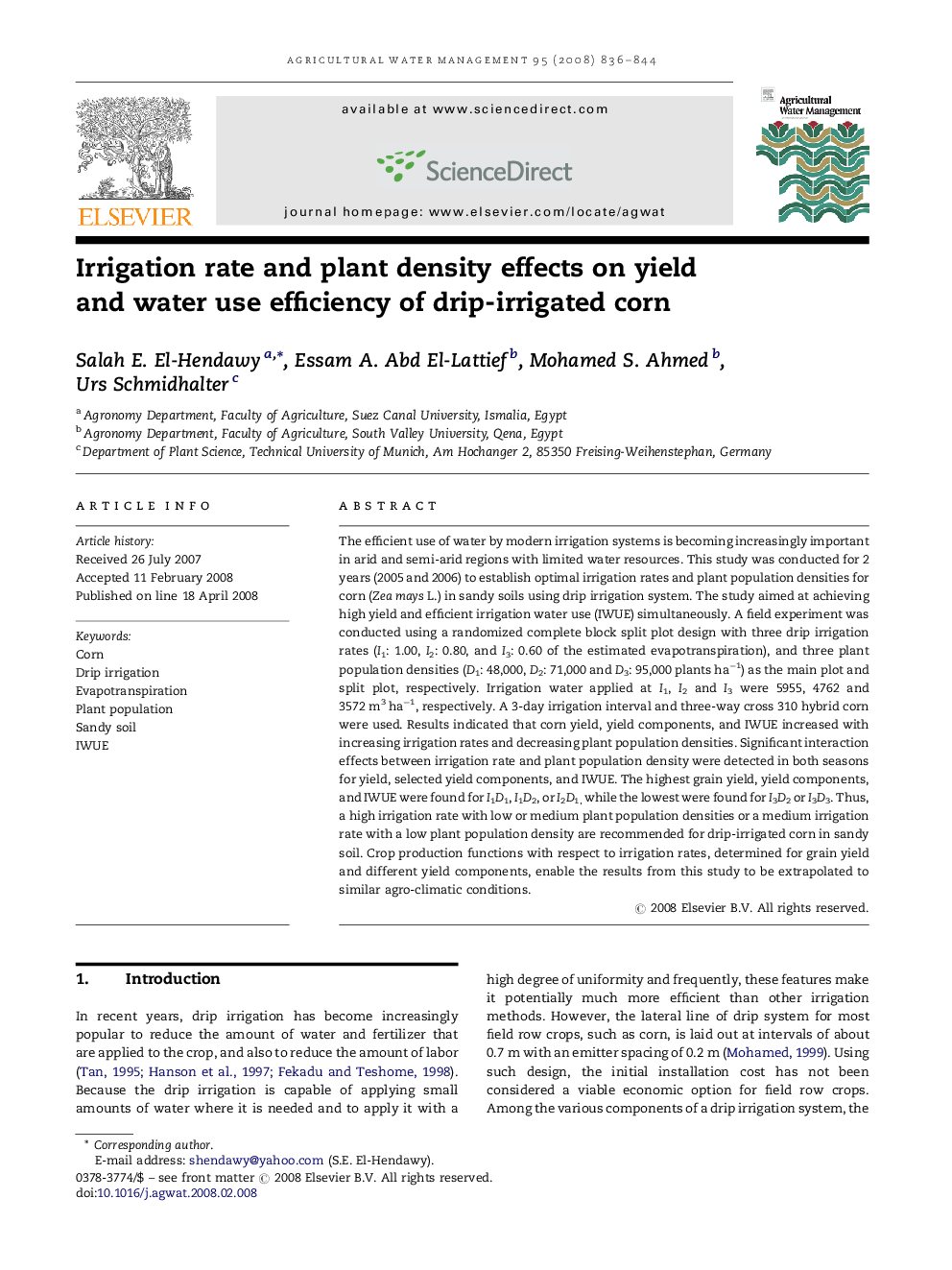| Article ID | Journal | Published Year | Pages | File Type |
|---|---|---|---|---|
| 4480235 | Agricultural Water Management | 2008 | 9 Pages |
The efficient use of water by modern irrigation systems is becoming increasingly important in arid and semi-arid regions with limited water resources. This study was conducted for 2 years (2005 and 2006) to establish optimal irrigation rates and plant population densities for corn (Zea mays L.) in sandy soils using drip irrigation system. The study aimed at achieving high yield and efficient irrigation water use (IWUE) simultaneously. A field experiment was conducted using a randomized complete block split plot design with three drip irrigation rates (I1: 1.00, I2: 0.80, and I3: 0.60 of the estimated evapotranspiration), and three plant population densities (D1: 48,000, D2: 71,000 and D3: 95,000 plants ha−1) as the main plot and split plot, respectively. Irrigation water applied at I1, I2 and I3 were 5955, 4762 and 3572 m3 ha−1, respectively. A 3-day irrigation interval and three-way cross 310 hybrid corn were used. Results indicated that corn yield, yield components, and IWUE increased with increasing irrigation rates and decreasing plant population densities. Significant interaction effects between irrigation rate and plant population density were detected in both seasons for yield, selected yield components, and IWUE. The highest grain yield, yield components, and IWUE were found for I1D1, I1D2, or I2D1, while the lowest were found for I3D2 or I3D3. Thus, a high irrigation rate with low or medium plant population densities or a medium irrigation rate with a low plant population density are recommended for drip-irrigated corn in sandy soil. Crop production functions with respect to irrigation rates, determined for grain yield and different yield components, enable the results from this study to be extrapolated to similar agro-climatic conditions.
